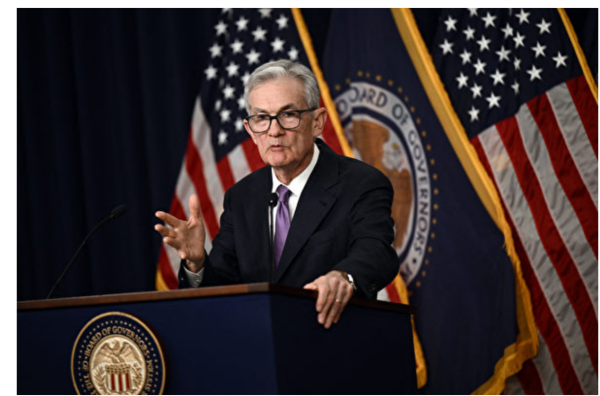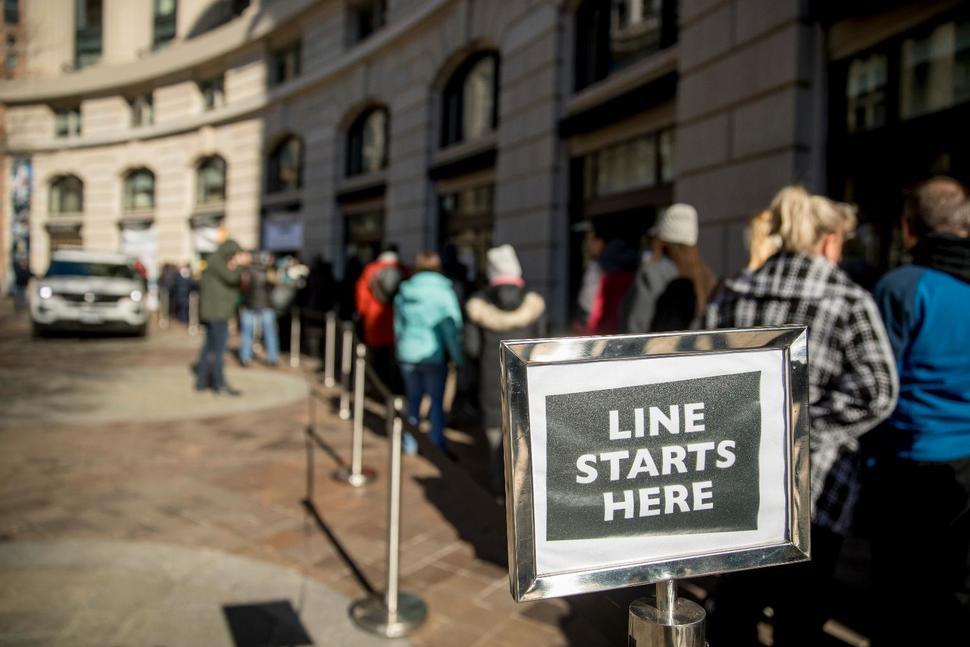
On December 14th, 2023, Beijing time, the last "interest rate night" of 2023, the Federal Reserve kept interest rates unchanged as expected by the market. The Federal Reserve kept interest rates unchanged at 5.25% -5.50% as expected, marking the third consecutive suspension of interest rate hikes by the Federal Reserve since a 25 basis point hike in July. Federal Reserve Chairman Powell has also changed his previous "hawkish" stance, stating that "interest rate cuts" have begun to enter the field of vision. And the financial markets are also due to the dovish signals released by the Federal Reserve, with most officials predicting three interest rate cuts in 2024, exceeding the previous predictions of many institutions.
According to the announcement after the Federal Open Market Committee meeting, officials expect to cut interest rates at least three times in 2024 (assuming a 25 percentage point cut each time), which is more aggressive than the Federal Reserve's previous statement. In addition, the Federal Reserve may cut interest rates four more times in 2025 (cumulative 1%), and three more times in 2026 to the range of 2% to 2.25%, approaching the long-term outlook. However, there is still uncertainty about the committee's ambition in terms of policy easing. This news has sparked widespread attention and discussion in global financial markets. However, the specific frequency and timing of interest rate cuts are difficult to determine, as they depend on various factors, including domestic and global economic conditions, inflationary pressures, unemployment rates, and so on. In addition, the decisions of the Federal Reserve will also be influenced by political factors.
Regarding the unexpected shift of the Federal Reserve, Cao Hongyu, a researcher at the Bank of China Research Institute, analyzed to 21st Century Business Herald reporters that overall, the decline in inflation in the United States in 2023 was relatively smooth, which is the main reason for the Federal Reserve's shift. The Federal Reserve remained silent at its December interest rate meeting, maintaining the interest rate range unchanged for three consecutive times and maintaining its monthly balance sheet reduction plan of $95 billion, in line with market expectations. At the same time, this interest rate meeting also significantly lowered the US inflation and federal funds target rates for 2023-2025, and remained open to discussions on interest rate cuts.
Although interest rate cuts have entered the field of vision, there is still no possibility of an end to balance sheet tightening in the short term. In response, Federal Reserve Chairman Powell stated that even though Federal Reserve officials are actively considering interest rate cuts next year, they have not yet decided when to end the reduction of their balance sheets. In most cases, interest rate policy and balance sheet actions operate independently, which means that the Federal Reserve may lower interest rates but will continue to push for actions to reduce balance sheets.
As the Federal Reserve acknowledges the easing of inflation issues, the focus of future monetary policy may gradually shift from fighting inflation to stabilizing the economy.
Federal Reserve officials believe that the global economic situation is deteriorating and economic growth may slow down in the coming months. To address this situation, the Federal Reserve needs to take interest rate cuts to stimulate economic growth. Although the inflation rate in the United States is currently at a relatively stable level, Federal Reserve officials are concerned that the inflation rate may rise in the future. If the inflation rate rises too quickly, the Federal Reserve may need to take interest rate hikes to curb inflation. Therefore, in order to avoid future interest rate hikes, the Federal Reserve's early adoption of interest rate cuts can better control inflation levels.
Overall, against the backdrop of the Federal Reserve's shift, global liquidity will improve to a certain extent, and non US dollar currencies, risk assets, and bond markets will see positive results. Relevant currency and asset prices will recover, while commodity prices need to be analyzed in conjunction with changes in market demand. At present, the Federal Reserve has begun to release signals of interest rate cuts, and the focus of the next stage is on the timing and magnitude of the rate cuts. The Federal Reserve's monetary policy remains to be seen.

On October 30 local time, Wes Moore, the governor of Maryland, USA, declared a state of emergency across the state to deal with the economic shock brought about by the federal government's "shutdown".
On October 30 local time, Wes Moore, the governor of Maryla…
In late October local time, just days after the signing of …
On October 29th, local time, the Federal Reserve concluded …
When the autumn leaves in Washington turned golden, the US …
Recently, according to MarketWatch, the supply of beef in t…
When NVIDIA's market value exceeded 5 trillion US dollars, …